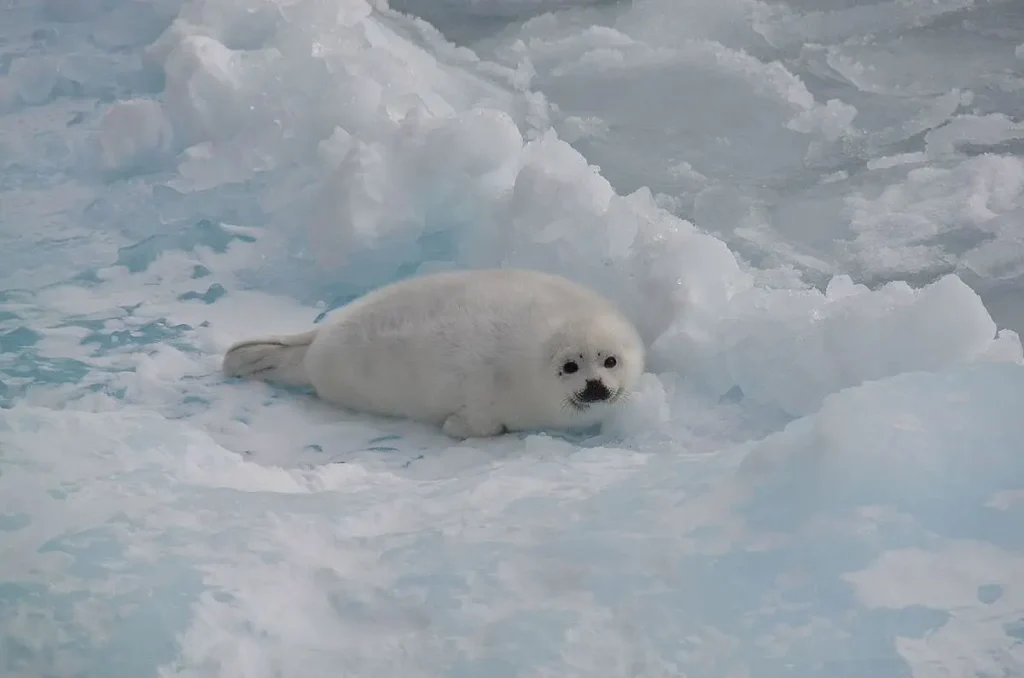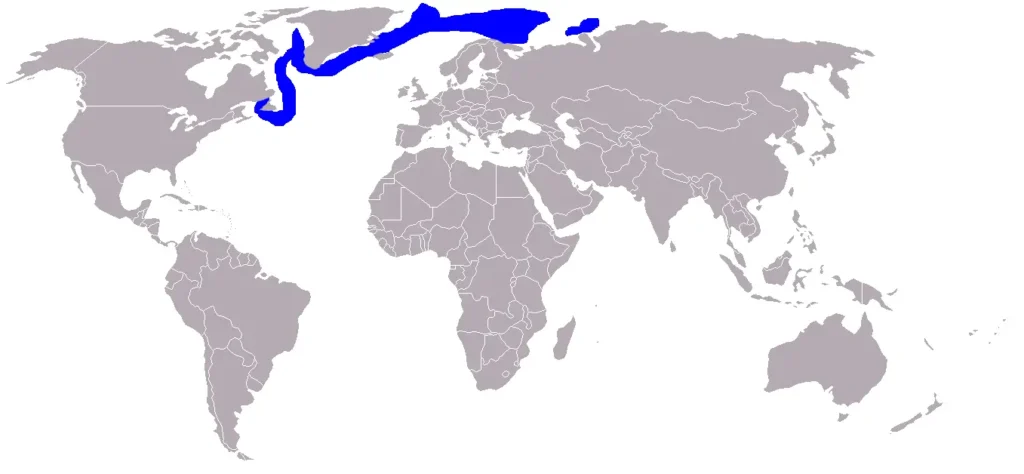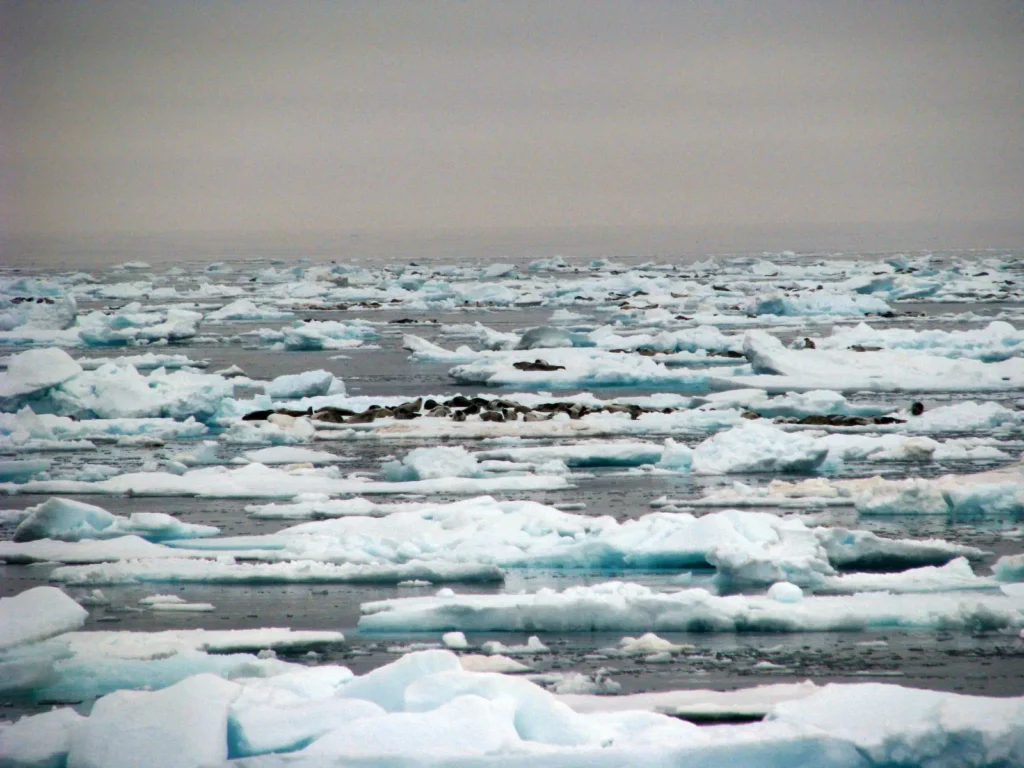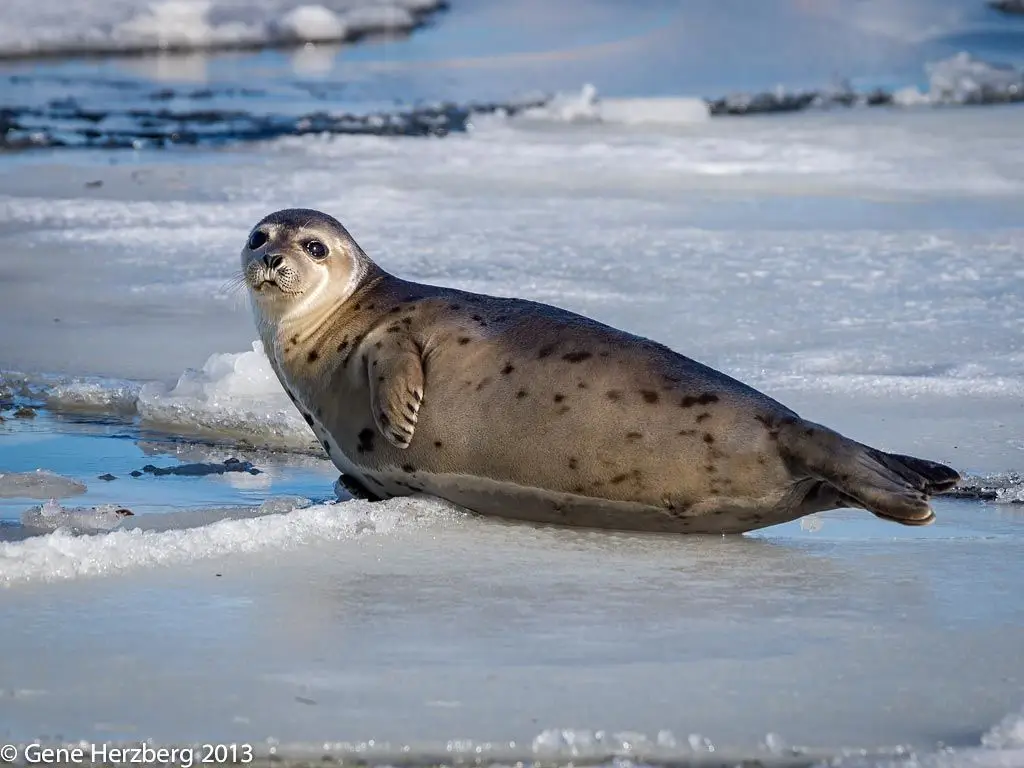The harp seal (Pagophilus groenlandicus), also known as the ice seal, is a medium-sized marine mammal in the seal family (Phocidae). It lives in the cold waters of the North Atlantic and Arctic Ocean, particularly in areas rich in drifting ice.
These animals are known for their amazing adaptation to life in harsh conditions, as well as their role in the traditional culture of the peoples of the North. Baby harp seals, called "white seals" because of their fluffy white fur, attract considerable attention and have become a symbol of conservation campaigns.

Classification and scientific name
• The Kingdom: Animals (Animalia)
• Type: Chordal (Chordata)
• Class: Mammals (Mammalia)
• Row: Predatory animals (Carnivora)
• Family: Seal (Phocidae)
• Gender: Pagophilus (harp seals)
• View: Pagophilus groenlandicus
Name of the genus Pagophilus is translated from Greek as "lover of ice", which fully corresponds to the lifestyle of these animals.
Physical characteristics
Dimensions and weight
📌 Length of an adult seal: 170-200 cm
📌 Weight: 115-145 kg (males are slightly larger than females)
Color and fur
✔ Adult harp seals have silver-gray fur with black spotsthat form a characteristic saddle-shaped pattern.
✔ Newborn seals ("white" seals) are covered thick white furwhich helps them keep warm.
✔ At the age of 2-3 weeks, they molt and acquire a gray color, which is typical for young individuals.

Range and habitat
🔵 Main places of residence:
✔ North Atlantic
✔ Arctic Ocean
✔ The coasts of Canada, Greenland, Norway and Russia
🔵 The main breeding areas:
✔ White Sea (Russia)
✔ West coast of Greenland
✔ Northern regions of Canada
Greenland seals live in the open sea but breed and molt on drifting ice.
Lifestyle and behavior
🌟 Main behavioral traits
✅ They swim very well and can dive to depth up to 275 meters
✅ Can hold their breath up to 20 minutes
✅ Migration - they cover thousands of kilometers in a year
✅ Live in large groups, especially during breeding
🌟 Social structure
✔ They live in large herds
Young seals can gather in separate groups
✔ Interact with each other through sounds and movements

Food and the way we get it
🍽 A typical harp seal diet:
✔ Fish (cod, capelin, herring)
✔ Crustaceans (krill, shrimp)
✔ Cephalopods
💡 Hunting methods
🔹 Diving in search of prey
🔹 Use sensitive antennae (vibris) to find food in dark water
🔹 Hunt mostly at night
Reproduction and life cycle
❤️ Mating season: February - March
❤️ Pregnancy: ~11.5 months
❤️ Number of cubs: 1 (very rarely 2)
❤️ Milk period: about 12 days
👶 Новонароджені “біленькі”
✔ Важать 10–12 кг при народженні
✔ Швидко ростуть завдяки жирному материнському молоку (до 50% жиру)
✔ Лишаються на кризі без матері після 2 тижнів
🧬 Life span: 25-30 years old

Natural enemies and threats
🔴 Predators
✔ Білий ведмідь 🐻❄
✔ Косатка 🐋
✔ Полярні акули
🔴 Person
✔ Полювання на тюленів (у минулому – заради хутра та жиру)
✔ Тане льодовий покрив через зміну клімату
✔ Ocean pollution
Охоронний статус та заходи захисту
🟢 Population size: 7–8 мільйонів особин
🟢 Природоохоронний статус: Найменший ризик (Least Concern, IUCN)
✅ Обмеження полювання
✅ Заповідні зони для розмноження
✅ Дослідження впливу зміни клімату
Гренландський тюлень у культурі та традиціях
✔ Для народів Арктики (інуїтів, саамів) тюлені – важливе джерело їжі та матеріалів.
✔ У XX столітті полювання на «біленьких» викликало міжнародний резонанс, що призвело до жорстких обмежень.
✔ Зображення тюленів часто використовуються в мистецтві, екотуризмі та природоохоронних кампаніях.
Conclusion
Гренландський тюлень – це дивовижний морський ссавець, що пристосувався до життя серед криги та снігу. Його роль у природній екосистемі та культурі північних народів робить його важливим символом Арктики. Хоча чисельність цих тварин стабільна, зміна клімату та діяльність людини залишаються ключовими викликами для їхнього майбутнього.